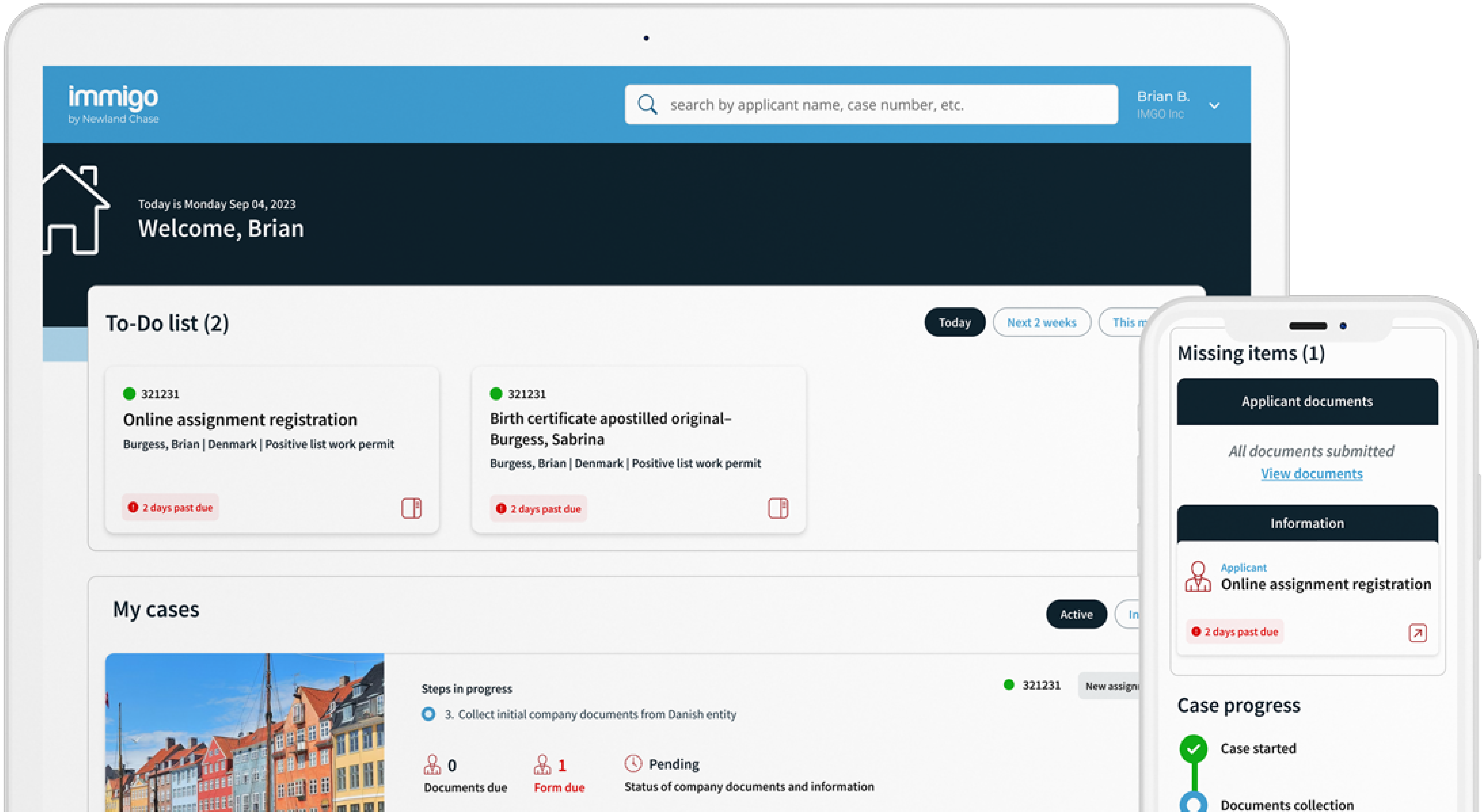Get The Visibility Your Company Needs
Reduce compliance risks and mobility costs while managing individual and project-related travel with ImmiSMART: the solution that unifies your travel and mobility programs.
BREXIT DEAL REACHED: What Does It Mean for UK-EU Immigration?
November 16, 2018
After more than 18 months of seemingly little progress, Brexit negotiations between the United Kingdom and the European Union seemed to take a leap forward recently when the two sides announced that they had come to agreement on the details of the UK’s withdrawal from the EU. The announcement followed a five-hour UK Cabinet meeting on 14th November in which Prime Minister Theresa May secured the approval of her government ministers.
However, in the light of the next day, questions emerged of… just how far a leap forward it was… and whether the leap forward may have simply been the prelude to a fall backward. As the details of the deal were digested by Members of Parliament (MPs) and the media, it became clear that neither those in the Brexit camp, nor those in the remain camp, were happy. Several Cabinet ministers resigned (including Brexit Secretary Dominic Raab), the Prime Minister weathered a rancorous drilling in the House of Commons, letters of no confidence challenging May’s leadership were submitted, and numerous MPs lined up to publicly state they would not support the deal when it comes up for vote in Parliament. Despite the obvious cool reception the deal received in the UK, both PM May and the EU leadership are publicly taking the position that this is the only withdrawal deal possible with the only alternatives being a no-deal Brexit or no Brexit at all.
What’s Actually in the Deal?
To begin with, it’s important to understand that the agreement is not even the final relationship between the UK and the EU. That comes later (even years later) as the UK and the EU gradually negotiate and build the future of their trade relationship after 29 March 2019. The agreement is best thought of as the “separation agreement” – stating what happens on 29 March when the UK and the EU officially split.
The agreement is 585 pages; so we’re still absorbing a lot of it. The agreement covers three major areas: (1) the financial settlement of the UK’s financial commitments to the EU, (2) the status and rights of EU citizens in the UK and UK citizens in EU member states after 29 March, and (3) the status of the Irish land border between the EU member state of the Republic of Ireland and the UK’s Northern Ireland.
What’s Next?
At this point, it’s anyone’s guess. The political situation is extremely fluid right now in the UK, and positions will continue to evolve and shift as the sides for and against martial their support. But here’s what we do know at the moment:
- Signing Summit Scheduled for 25 November 2018. In order to come into force, the agreement must be signed by both the UK and the EU, after which it will be submitted to the UK Parliament and the various EU member states’ legislative bodies for ratification.
- An uphill battle in Parliament. This week any MPs in favour of the deal have been largely silent, but plenty are vocally lining up against. Much of this week is political posturing; no one was genuinely surprised by the deal. But it’s too early to tell what MPs will do when actually faced with the decision of voting for an agreement no one believes is perfect or the perilous unknown of crashing out of the EU in March with no deal.
- Prime Minister May is politically wounded but will push forward. Despite calls for her removal, PM May shows no sign of turning back on Brexit. However, for the first time, there is real question whether her administration will survive to see Brexit through the transition. Late this week, Conservative Party whips were returning to London… for a no confidence vote? But the greater question may be – does anyone else really want her job? Whoever inhabits Number 10 is going to pay a steep political price.
- Any agreement will be unpopular. Just because the present agreement is unpopular doesn’t mean it won’t ultimately be implemented. Reality is that there are really no pain-free solutions in this divorce. Short of reversing course, the road ahead is a matter of picking between the lesser of the evils.
- Another separation agreement is unlikely. Both the May administration and the EU leadership are saying that it’s this deal or nothing. Technically there is time for some last minute changes before the signing on 25 November. But after 18 months of negotiating, both sides compromised their positions to arrive at this deal. It’s hard to see how more time at the bargaining table will produce a more palatable result.
- Odds in favour of a second referendum have gone up from maybe 20/80 before this week to maybe 49/51 now. A second referendum is still more unlikely than likely, but it’s close. The UK electorate is deeply divided on the fundamental question of whether to go forward with Brexit given what they know now. There are reasons why both sides of the issue may want a referendum – if for nothing else but to provide politicians with political cover for whichever unpopular option they choose.
What’s the Controversy?
Throughout the negotiations, the most difficult and most controversial of the three major subject areas has been what to do with the Irish border. Even with the agreement now released, the provisions regarding the Irish border are generating the most backlash from objectors and will form the battleground over whether to approve or reject the agreement. Both the UK and the EU want to avoid a “hard border” with customs checks, but the solution to avoid that result is messy. The solution now agreed is known as the “backstop” arrangement. Essentially, the whole of the UK remains in the single market and customs union until the problem is resolved by the eventual trade agreement between the UK and the EU, or both parties agree that exiting the single market and customs union would not result in a hard border between the Republic of Ireland and Northern Island. Brexiteers complain that the deal essentially keeps the UK in the EU going forward for an indefinite period of time.
What About Immigration Specifically?
While immigration may have been the hot topic of the leave-remain debate leading up to the Brexit referendum in June 2016, it’s been the least problematic in the actual negotiations. Little in the agreement regarding immigration that came out this week was a surprise or a significant diversion from what both parties have been saying thus far. In a nutshell, here’s what the agreement says about immigration and the status and rights of EU nationals in the UK and UK nationals in the EU:
- Transition Period. Until the end of 2020, EU and UK nationals will continue to have the same rights of freedom of movement, work, study, residence, and benefits as they currently enjoy. The parties may extend the transition period even longer.
- Permanent Residency. EU nationals living in the UK and UK nationals living in the EU before the end of the transition period are eligible for permanent residency after accumulating five years of continuous residency. Those that have accumulated less than five years by the end of the transition period may continue to accumulate residency toward permanent residency. They must register for a residency document before six months of the end of the transition period (currently 30 June 2021).
- Common Travel Area. The Common Travel Area, consisting of the UK and the Republic of Ireland, will continue. UK and Irish citizens will retain the right to travel, live, and work in each other’s countries without additional immigration requirements.
- EEA and Swiss Nationals. The rights of non-EU European Economic Area (EEA) citizens (citizens of Iceland, Liechtenstein, and Norway) and Swiss citizens are to enjoy the same rights as they currently enjoy in the UK.
- EU Courts. The UK will continue throughout the transition period to recognize immigration rights and rulings of the EU courts and case law.
What Do We Do Now?
Throughout this Brexit process, Newland Chase has been at the forefront of preparing the business community in the UK and the EU for these unprecedented changes in corporate mobility and immigration. Essentially, the agreement this week has not changed our basic advice for companies with EU employees in the UK and UK employees in the EU:
- Thrive despite uncertainty. Throughout, we’ve advised our clients to expect uncertainty. Prepare for potential negative outcomes (like a no-deal Brexit next March) with contingency planning, but continue with your current long-term strategy.
- Register your employees for settled status. For your EU employees in the UK, immediately help them register for “settled status” and “pre-settled status” as soon as the UK Home Office’s registration system opens to them. For your UK employees in EU member states, watch in coming months for similar systems to be implemented and immediately have your employees register.
- Recruit needed EU and UK talent ahead of the end of the transition period. Prior to the end of the transition period, the process for obtaining work and residence authorization for EU employees in the UK and UK employees in the EU will remain under the current laws. Evaluate and anticipate your labour force needs ahead of time, and where possible, have your employees in place prior to this date.
- Prepare for recruiting in a post-Brexit world. After the end of the transition period, EU and UK nationals will fall under the same work and residence authorization routes as apply to non-EU nationals now. Determine your typical employee profile and evaluate whether or not they will qualify under the existing employment-based immigration routes. Your immigration specialists can assist in this process and suggest alternate immigration strategies where available.
- Contact your Newland Chase immigration specialist today for a comprehensive assessment and recommendations on how your company and employees can continue to thrive despite seemingly turbulent times.
Continue to follow our alerts and this blog to keep on top of these fast-changing developments in the UK and the EU on the Newland Chase website at blog.newlandchase.com. Or sign up at the bottom of this page to have them conveniently emailed to you once each week. Readers may also benefit from viewing the on-demand recording of our recent webinar “Racing to Brexit: Six Months to Go” here, where our experts in our London office prepped our clients for just the events we are now seeing this week.
This blog is informational only and is not intended as a substitute for legal advice based on the specific circumstances of a matter. Readers are reminded that immigration laws are fluid and can change at a moment’s notice without warning or notice. Please reach out to your Newland Chase contact should you require any additional clarification or guidance. Written permission from the copyright owner and any other rights holders must be obtained for any reuse of any content published or provided by Newland Chase that extend beyond fair use or other statutory exemptions. Responsibility for the determination of the copyright status and securing any permissions rests with those persons wishing to reuse this blog or any of its content.




